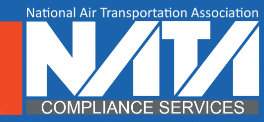
Over the last couple months, we have discussed making your aviation security training program more efficient, who needs training, the three most commonly forgotten groups, and how much you really will spend developing and running your in house training program. These blogs have all helped pull the curtain back from some of the most common questions when it comes to aviation security training. These all have been fairly general. This month, we get a bit more specific. Those of you who have an in-house training program may go as far as having staff or contracted instructors. Let’s take a look at the real cost of that decision.
When you have made the decision to hire an instructor, be it a contract employee or a member of your staff, the most obvious factor you will have to consider in terms of cost is annual pay. According to indeed.com, the average technical trainer is $92,000. This varies wildly from place to place and can go as low as $52,000 per year, so you will want to be careful what number you plug in here. You will want to factor in all compensation, including bonuses, severance pay, stock/partnership costs, and any other financial incentives you are offering. This can add $1,000 or more to a salary, so remember to take that into consideration.
The next most obvious factor to consider is the direct and indirect overhead costs for this employee. These all need to be factored in as they will help you figure out the real cost of the employee.
Direct costs to consider are taxes. These will again vary between cities, counties, and states. These include how much you will pay into FICA, Medicare, and Unemployment taxes, among other payroll line items per employee. This tends to be at least 10% to 15% of the employee’s salary, according to the Lakewood Media Group. Benefits are another major factor to consider:
- Do you have a 401k with matching contributions?
- How much do you contribute to medical, dental, vision, life, and short-term disability insurance programs?
- Do you give severance packages?
These are the obvious benefits but if you tend to give other “morale-based” benefits such as taking employees to lunch or having an annual company picnic, these should be included as well. These benefits are commonly between 5% and 25%, but this can be more if your company is particularly generous on benefits.
These aren’t the only things to consider. Your new staff member will utilize other expenses and materials. These costs can add up if you aren’t careful. However, if this is purely in-house and your company only has one location, this can be kept fairly minimal. Smaller costs include copying, printing, and producing slides or transparencies for training. If you training your trainer is your expense, include that here as well. Larger costs include sending your trainer to another location, which requires travel expenses. This varies considerably but tends to be around the 5% to 35% range, generally staying on the lower end of that range.
Indirect costs are hidden and are often where things get expensive. Examples of indirect costs associated with your trainer include the costs of having employees in training; hiring and supervisory costs related to that employee; the marginal telephone, fax, Internet and various other computer services costs; and costs for space used, furniture, any secretarial or support services they need. These indirect costs are at least 20% of employees’ annual salaries, and they can often go above 75%.
Estimating the real costs from this point is fairly simple. Add each of the percentages that you assigned to the various sections. For example, if your employee is going to have additional tax costs of 13%, benefits that are 20% of his or her annual salary, direct expenses that are 12% of his or her annual salary, and indirect costs that are 50% of his or her annual salary, this totals 95%. Because this is in addition to a base salary, your trainer is costing you 195% of his or her base salary! So if your employee’s salary is $72,000 per year, multiplying that by 1.95 means your training employee is costing you $140,400 per year! A vast majority of the estimated overhead costs, especially the indirect costs, tend to be greatly underestimated. Also, your trainer will be unavailable to train during vacation, sick days, holidays, and seminars he or she will need to attend to maintain a career in training. On average, you hope that you can get your trainer to be actively training about 70% of the time, although this rarely actually happens.
Can you justify spending $140,400 on a staff member to train who will only be training 70% of the time he or she is paid to train?
Most companies, upon realizing how expensive this can be, will begin searching for alternatives. The best alternative may be for your company to outsource your training to someone who does it online. If you are wondering if outsourcing is for you, click here to download our free white paper on why you should outsource your training.
Photo Credit: Flickr




